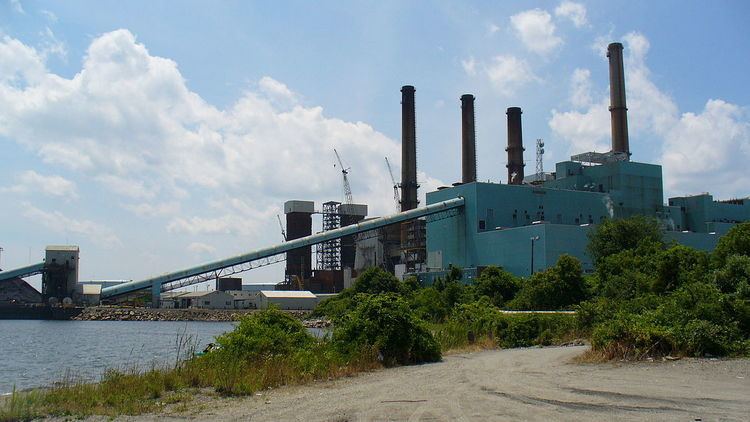 | ||
Thermal pollution is the degradation of water quality by any process that changes ambient water temperature. A common cause of thermal pollution is the use of water as a coolant by power plants and industrial manufacturers. When water used as a coolant is returned to the natural environment at a higher temperature, the change in temperature decreases oxygen supply and affects ecosystem composition. Fish and other organisms adapted to particular temperature range can be killed by an abrupt change in water temperature (either a rapid increase or decrease) known as "thermal shock."
Contents
Urban runoff—stormwater discharged to surface waters from roads and parking lots—can also be a source of elevated water temperatures.
Warm water
Elevated temperature typically decreases the level of dissolved oxygen of water, as gases are less soluble in hotter liquids. This can harm aquatic animals such as fish, amphibians and other aquatic organisms. Thermal pollution may also increase the metabolic rate of aquatic animals, as enzyme activity, resulting in these organisms consuming more food in a shorter time than if their environment were not changed. An increased metabolic rate may result in fewer resources; the more adapted organisms moving in may have an advantage over organisms that are not used to the warmer temperature. As a result, food chains of the old and new environments may be compromised. Some fish species will avoid stream segments or coastal areas adjacent to a thermal discharge. Biodiversity can be decreased as a result.
High temperature limits oxygen dispersion into deeper waters, contributing to anaerobic conditions. This can lead to increased bacteria levels when there is ample food supply. Many aquatic species will fail to reproduce at elevated temperatures.
Primary producers (e.g. plants, cyanobacteria) are affected by warm water because higher water temperature increases plant growth rates, resulting in a shorter lifespan and species overpopulation. This can cause an algae bloom which reduces oxygen levels.
Temperature changes of even one to two degrees Celsius can cause significant changes in organism metabolism and other adverse cellular biology effects. Principal adverse changes can include rendering cell walls less permeable to necessary osmosis, coagulation of cell proteins, and alteration of enzyme metabolism. These cellular level effects can adversely affect mortality and reproduction.
A large increase in temperature can lead to the denaturing of life-supporting enzymes by breaking down hydrogen- and disulphide bonds within the quaternary structure of the enzymes. Decreased enzyme activity in aquatic organisms can cause problems such as the inability to break down lipids, which leads to malnutrition.
In limited cases, warm water has little deleterious effect and may even lead to improved function of the receiving aquatic ecosystem. This phenomenon is seen especially in seasonal waters and is known as thermal enrichment. An extreme case is derived from the aggregational habits of the manatee, which often uses power plant discharge sites during winter. Projections suggest that manatee populations would decline upon the removal of these discharges.
Cold water
Releases of unnaturally cold water from reservoirs can dramatically change the fish and macroinvertebrate fauna of rivers, and reduce river productivity. In Australia, where many rivers have warmer temperature regimes, native fish species have been eliminated, and macroinvertebrate fauna have been drastically altered. This may be mitigated by designing the dam to release warmer surface waters instead of the colder water at the bottom of the reservoir.
Thermal shock
When a power plant first opens or shuts down for repair or other causes, fish and other organisms adapted to particular temperature range can be killed by the abrupt change in water temperature, either an increase or decrease, known as "thermal shock."
